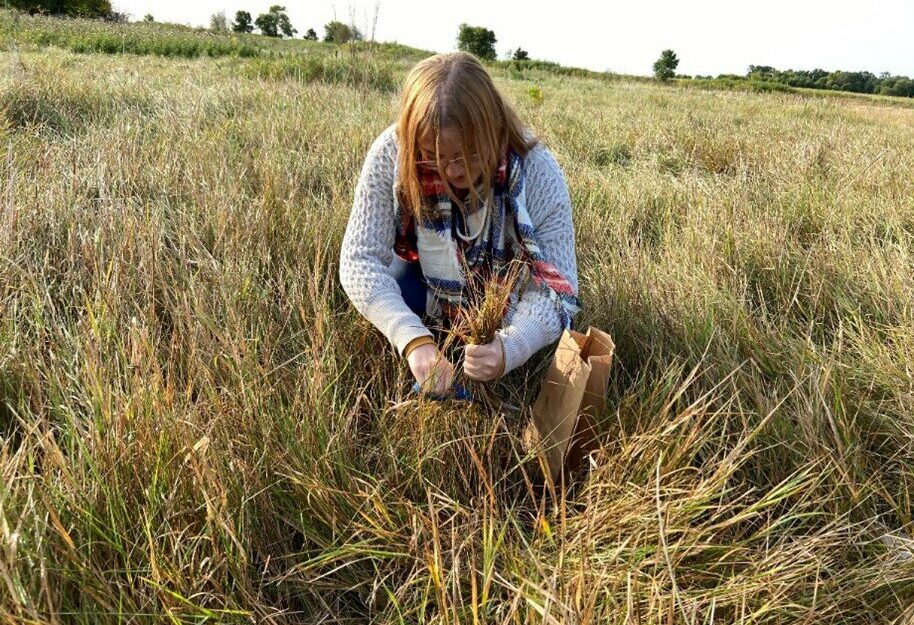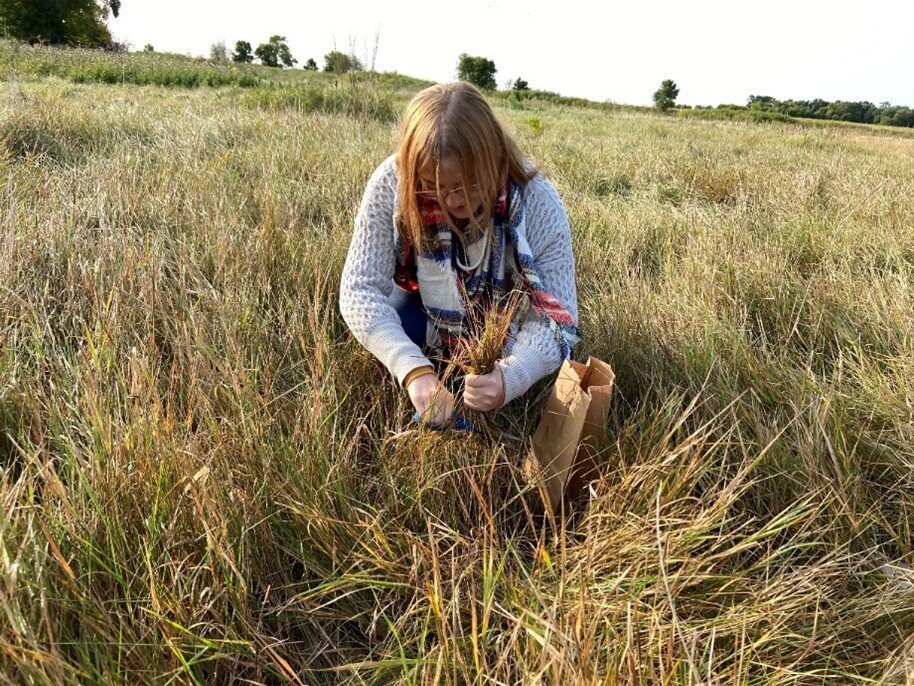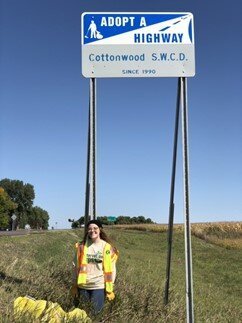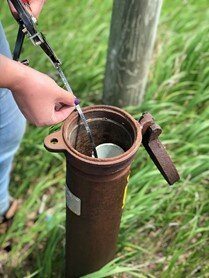Keeping It Interesting

by Ashley Broussard, Agriculture and Water Outreach AmeriCorps Member with the Minnesota Department of Agriculture through Conservation Corps’ Individual Placement program
This past month I have been exposed to a variety of field activities and projects. One of the things I love about working alongside the MN Department of Agriculture and Cottonwood Soil and Water Conservation District is that almost every day is a new experience.
Estimating available biomass for grazing
An important measurement for livestock producers is the amount of biomass available for animals. This month one of the resource technicians, Becky, taught me how to collect and measure samples to report back to the producer.

Once a year, Cottonwood SWCD staff clear debris and trash from a 2-mile stretch of highway. This month, myself and 3 SWCD staff were able to remove roughly 50 pounds of trash. This trash would have otherwise made its way into Minnesota lakes and rivers.

The amount of time it takes water to infiltrate the soil is an important piece of data to estimate flooding potential. When intense rains come, a quicker infiltrate rate means the piece of land is able to take in water easier and reduces the potential for flooding. The infiltration rate of cultivated land is compared to a nearby uncultivated piece in order to determine if there are better land management practices that could be put in place.

Our office helps our local DNR office and reports on monitoring well data. There are automated devices inside the wells that report some of the data such as pressure and temperature of the water. Our office looks at how far the depth to the water table is from the top of the well to keep track of the groundwater level.
